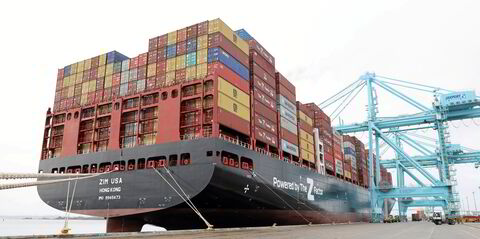Two things happened on Tuesday that augur well for dry cargo markets in the short term and in the longer term.
The Baltic Dry Index (BDI) broke through the 2,000-point level to reach its highest assessment since July.
At the same time, China — the world’s biggest centre of demand for seaborne dry commodities — announced new stimuli for its economy, which in turn could generate demand for shipping, if the nation successfully boosts its GDP growth.
The BDI, which is the overall indicator of the strength of dry cargo markets for vessels ranging from supramax up to capesize in tonnage, rose by 15 points on Tuesday to reach 2,014.
Much of this growth came from the capesize market, where average spot rates across five key benchmarks were assessed $216 higher on Tuesday, at $27,378 per day.
Underwhelming?
The best news of the day came from China, where the central bank unveiled a broad package of monetary stimulus measures to help revive investor confidence and kick-start economic growth.
Analysts, however, have questioned whether the package will be enough to get things back on track, ease deflationary pressure and save China’s ailing real-estate sector.
The potentially positive news for dry-cargo shipping is that the stimulus plan includes a package aimed at supporting China’s troubled property sector.
Borrowing costs will be lowered and rules for buying second homes will be eased.
However, the package does not include any meaningful measures to boost consumer demand for new properties, which is what drives demand for iron ore for steel used in construction, among other dry commodities.
Evercore lead China analyst Neo Wang said in a note on Tuesday: “The stimulus is not enough to address the urgency and degree of challenges reflected in pre-announcements today.
“But it has become clear that Beijing is willing to take increasingly bigger steps to shore up growth. This policy momentum is precious and encouraging. Markets reacted positively.
“Ultimately, it is up to stronger fiscal stimulus to do the heavy lifting.”
Futures shrug
The market for dry freight derivatives did not react very much to the stimulus package.
Bids for capesize paper for the calendar year 2025 were at about $21,700 per day as of 4pm in London, up by less than $100 since the market opened.
Other contracts struggled to see even three-figure gains on Tuesday.
The November contract for capesizes saw some of the most growth over the day’s trading, increasing by more than $200.
Bidding was at $27,350 per day about an hour before the market closed.
The Baltic Exchange’s forward curve for capesizes currently indicates daily rates of just under $30,000 for October, falling to $27,000 and $26,600 in November and December.






